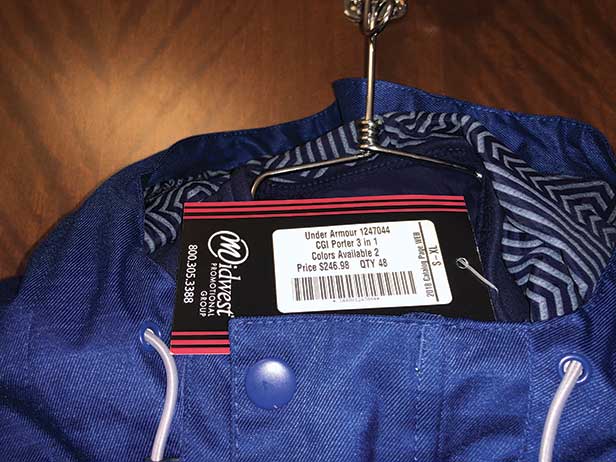Strategy September 13, 2019
How to Build A High-End Showroom
Create a client experience that translates to sales.
Midwest Promotional Group (asi/270800) has been pouring energy into its showroom for nearly a decade, beginning with a humble closet-like space and evolving to the current 2,500-square-foot room at its Burr Ridge, IL, headquarters. While many distributors leave the office for sales calls, Midwest reps treat clients to an in-house buying experience that highlights the company’s capabilities in the comfort of a retail-inspired, couch-clad space. Rick Daignault, executive vice president of Midwest Promotional Group, offers five tips for creating a high-end showroom to differentiate your company from competitors and command higher margins.
1. Mirror Retail Layout & Elements
Retail brands have mastered the art of shopping, which means it’s smart to mimic their efforts in your showroom. Research layouts, shelving units, building materials, lighting and even consumer buying patterns to create an experience that will make customers feel pampered. Midwest consulted with the designer that builds out Ralph Lauren showrooms to give theirs a true upscale country club atmosphere. “Our clients and end-users love visiting us because they can sit on couches, have a beverage and feel catered to while researching their next order,” Daignault says.

Use a barcode system to keep track of all the samples in your showroom.
2. Organize by Color or Brand
The top two concerns to administering samples are keeping them in good condition and displaying them in an aesthetically pleasing way. Midwest’s solution: Organize samples in color waves, grouping shades of the same primary colors together. The company trains reps to ensure that its 1,200+ showroom samples remain neat and clean for all upcoming client meetings. They’ve also developed a system to “check out” and “check in” wearables so no sample is missing from the shelf for too long.
3. Develop a Sample Database
In addition to a sales rep accountability system, it’s important to create a database that supports this intention. Work with IT to develop a barcoding system that allows reps to find a sample in the showroom or storage room and sign it in and out when needed. If you want extra support for sales meetings, develop an integrated program that allows reps to reach more information about a product when they scan the product’s barcode.
4. Highlight Decorated Garments
Since Midwest offers in-house embroidery, screen printing, DTG and heat transfers, Daignault encourages an assortment of decorated products in the showroom. “We’re proud of our decoration capabilities, so it’s important to showcase what we can do,” he says. “Most of the time, we’re highlighting high-end brands to elevate the experience, and we’ll mix in our in-house techniques to add even more value.”

Midwest Promotional Group (asi/270800) aims for an upscale atmosphere for its in-house showroom.
5. Alternate Featured Products
A main aspect of an effective retail layout is a “featured products” section, which allows companies to highlight certain brands, categories and colors. “We feature different brands based on the season, what’s popular at the time or what’s new in the industry,” Daignault says. Reps are also allowed to supplement the showroom or switch out featured products if they’re hosting a client looking for particular styles and categories of wearables. Andy Vantrease is a contributing writer for Wearables.
